Related Research Articles

Cosmas and Damian were two Arab physicians and early Christian martyrs. They practised their profession in the seaport of Aegeae, then in the Roman province of Syria.
Cyricus, and his mother, Julitta are venerated as early Christian martyrs. According to tradition, they were put to death at Tarsus in AD 304.

Saint Gorgonius of Nicomedia was a Christian martyr, part of the group Gorgonius, Peter Cubicularius and Dorotheus, who died in 304 AD at Nicomedia during the Diocletianic Persecution.
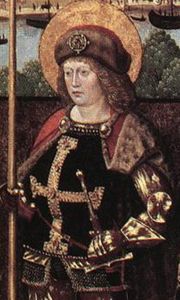
Gereon of Cologne, who may have been a soldier, was martyred at Cologne by beheading, probably in the early 4th century.
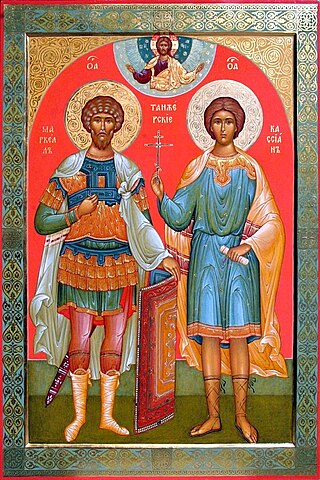
Saint Marcellus of Tangier or Saint Marcellus the Centurion was a Roman centurion who is today venerated as a martyr-saint by the Catholic Church and the Eastern Orthodox Church. His feast day is celebrated on October 30.
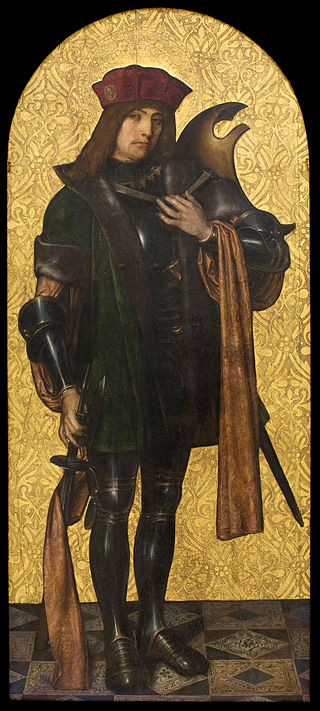
Candidus was a commander of the Theban Legion. The Theban Legion was composed of Christians from Upper Egypt. He is venerated as a Christian saint and martyr.

Solutor, along with Octavius and Adventor, is patron saint of Turin.

Fidelis of Como was an Italian soldier-saint, according to Christian tradition.
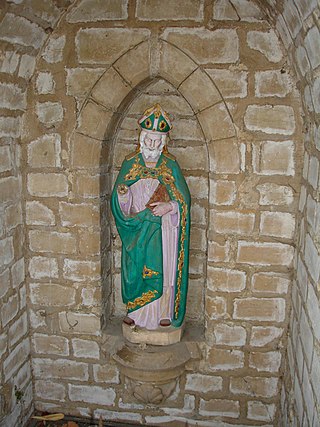
Saint Praejectus, Prejectus or Projectus (625–676) was a bishop of Clermont, who was killed together with the abbot Amarinus as a result of political struggles of the day.
Saints Felinus and Gratian(us) (sometimes Gratinian(us)) (d. 250 AD) are venerated as martyrs by the Catholic and Eastern Orthodox churches. They are patron saints of Arona, near Milan, where their relics were enshrined.
Saint Calocerus was a 2nd-century Christian martyr. He was probably an officer in the Roman army under the Roman emperor Hadrian and was stationed in Brescia in Lombardy, Italy. His life and legend are associated with Saints Faustinus and Jovita, and according to tradition, all three saints were soldiers from Brescia.
Saint Theonestus of Vercelli is venerated as a martyr by the Catholic Church. Theonestus may have been a member of the early Christian community in Vercelli, living in an era earlier than that of Eusebius of Vercelli. Theonestus may have been a martyr, whose relics were buried in the cemetery where other Christians were buried, outside the city walls. It is believed that his whole body was conserved in the tomb dedicated to him. He is probably not the saint of the same name who was said to have been killed at Altinum by the Arians. This saint of Altinum, whose legend, in any case, is confused and contradictory, may have been confused for the martyr of Vercelli, whose historicity is more certain.
Chiaffredo is venerated as the patron saint of Saluzzo, Italy. Tradition considers him a member of the Theban Legion, but instead of being martyred with this legion at Agaunum, he escaped to Piedmont and was martyred there.

Eleutherius (or Eleut erus or Eleftherios; sometimes called Liberalis or Liberator, the former transliterations and the latter translations of his and his mother Antia are venerated as Christian saints and martyrs in Greece and Albania.

Saint Torquatus is venerated as the patron saint of Guadix, Spain. Tradition makes him a Christian missionary of the 1st century, during the Apostolic Age. He evangelized the town of Acci, identified as Guadix, and became its first bishop.
Saint Magnus of Anagni, also known as Magnus of Trani or Magnus of Fabrateria Vetus, is venerated as the patron saint of Anagni.
Magnus of Cuneo is venerated as a martyr and member of the legendary Theban Legion. The center of his cult is situated at the mountain sanctuary known as the Santuario di San Magno, in the Valle Grana, Castelmagno, in the province of Cuneo. His feast day is August 19.

Constantius is venerated as a member of the legendary Theban Legion. Similar to the cults of Chiaffredo at Crissolo, Bessus at Val Soana, Tegulus at Ivrea, Magnus at Castelmagno, and Dalmatius at Borgo San Dalmazzo, the cult of Constantius was linked with that of the Theban Legion to lend antiquity to a local saint about whom nothing was really known.
Bessus, sometimes Besse, is venerated as a member of the legendary Theban Legion, whose members were led by Maurice and were martyred for their Christian faith in the 3rd century. Except for the cult of Saint Maurice, veneration for Bessus enjoyed a wider popularity than those associated with other saints of the Theban Legion and remains popular today. According to tradition, Constantius survived the decimation of his legion and fled to valleys of Aosta and Cogne. He then dedicated himself to converting the people in this area to Christianity.
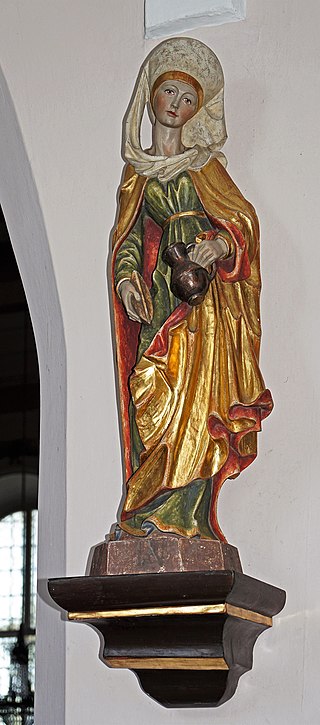
Verena of Zurzach, mostly just called Saint Verena is an early Christian consecrated virgin and hermit. She is especially venerated in Switzerland, where her cult is attested in Bad Zurzach, the reported place of her burial, from at least the 5th century. She is recognized as a saint in the Roman Catholic Church as well as in the Eastern Orthodox Church and the Oriental Orthodox Churches. Her feast is on 1 September.